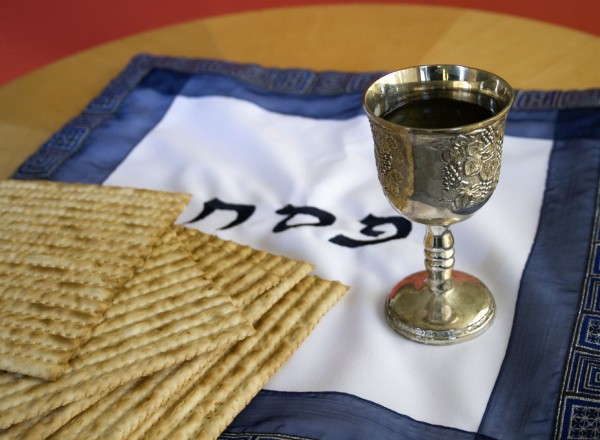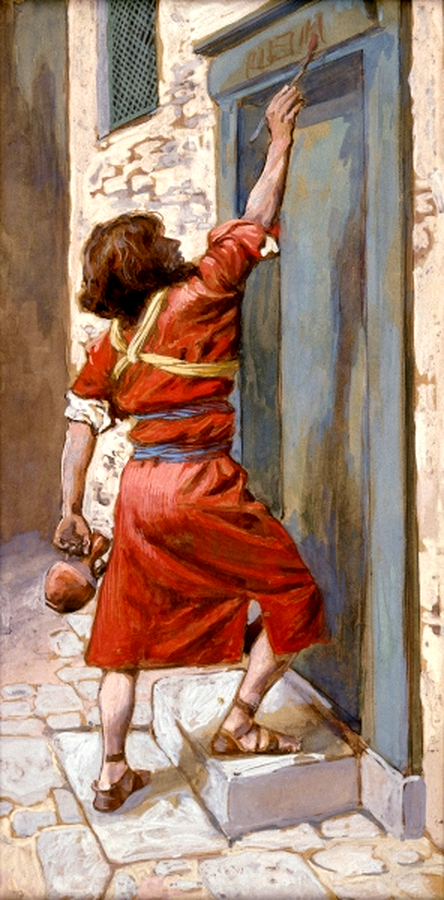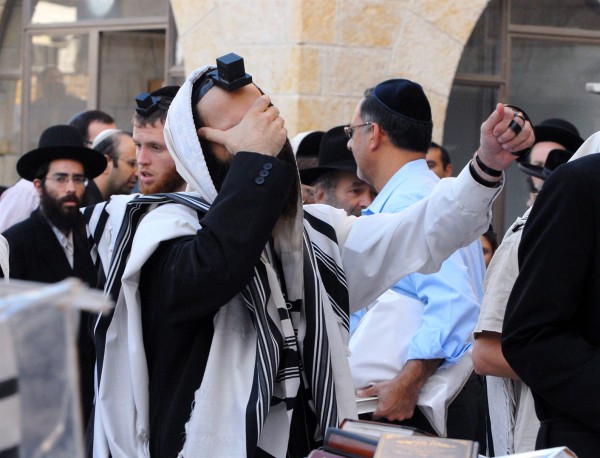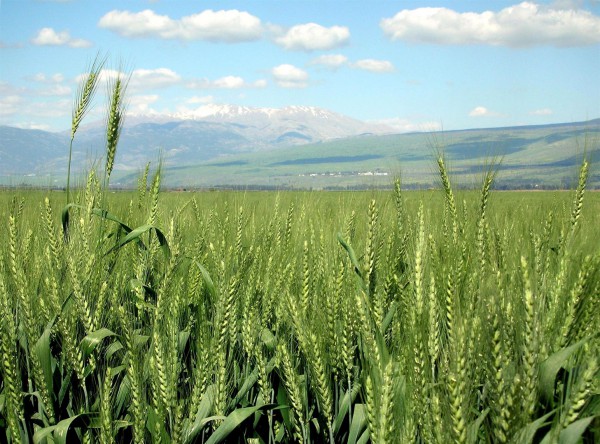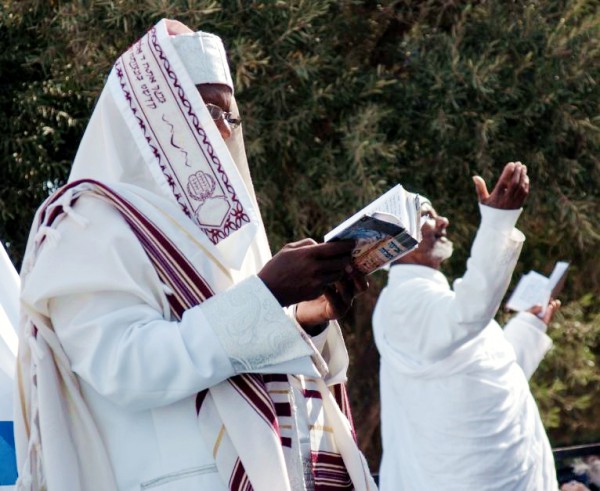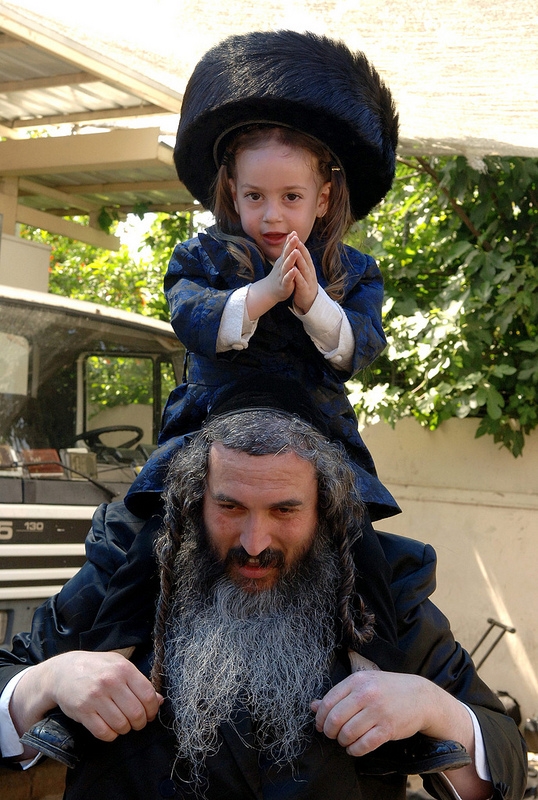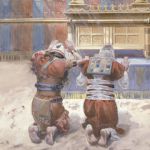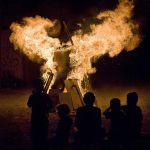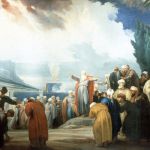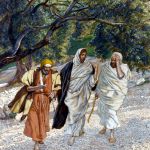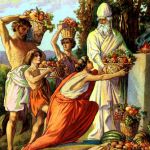“When I see the blood, I will pass over you.” (Exodus 12:13)
Today, is Pesach Sheni (Second Passover).
This second Passover of the Jewish year falls 30 days after the day on which the Korban Pesach (Passover lamb) was brought to the Temple to be slaughtered in time for the Passover Seder, the ceremonial meal at which the story of the Exodus is recounted on the first night of Passover.
This holiday is unique from every other Jewish holiday. God provided it as a day of second chances in response to the plea of the Israelites who couldn’t keep Pesach (Passover) because they had become tamai (ritually unclean).
“But some of them could not celebrate the Passover on that day because they were ceremonially unclean on account of a dead body. So they came to Moses and Aaron that same day and said to Moses, ‘We have become unclean because of a dead body, but why should we be kept from presenting the Lord’s offering with the other Israelites at the appointed time?’” (Numbers 9:6–7)
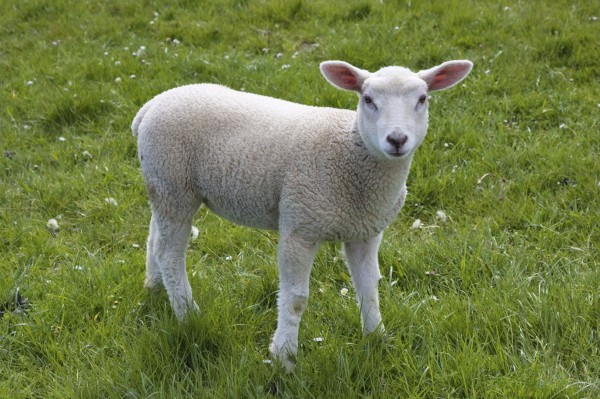
The Korban Pesach (Passover offering) was offered on Erev Pesach (Passover eve) and eaten on the first night of the holiday with matzah and bitter herbs.
Although they sincerely desired to keep the Pesach, they could not because they had come in contact with a dead body.
Moses, therefore, approached God for a solution to this problem. Bringing the Passover offering was so important that God graciously instituted a “make-up” date:
“Tell the Israelites: ‘When any of you or your descendants are unclean because of a dead body or are away on a journey, they are still to celebrate the Lord’s Passover, but they are to do it on the fourteenth day of the second month at twilight.’” (Numbers 9:10–11)
Keep in mind that this holiday was not provided so people could avoid offering to God the Korban Pesach at the appointed time. It was given for those who were legitimately unable to keep the Passover.
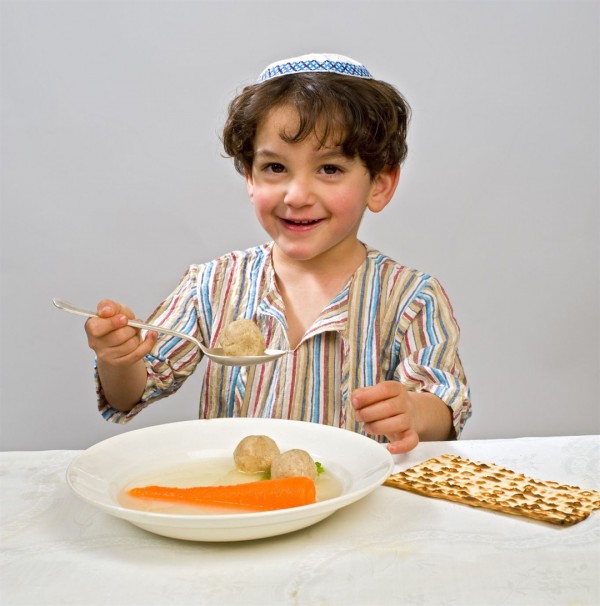
A Jewish boy enjoys a bowl of matzah ball soup during a Passover seder (ritual meal commemorating the Exodus from Egypt).
The Bible specifies that all of the regulations of Passover apply, and the Passover meal is to be eaten, although the house does not need to be thoroughly cleansed of leaven (yeast products).
Of course, since the Romans destroyed the Temple in AD 70, offering the Passover sacrifice is no longer possible. Still, many observant Jews will remember the sacrifice today by eating matzah.
In the Hassidic tradition, Pesach Sheni is celebrated with a Tish or a gathering in which the Rebbe gives a teaching. A meal is served with the traditional four cups of wine, matzah and maror (bitter herbs) of Passover, and zemirot or songs and hymns are sung.
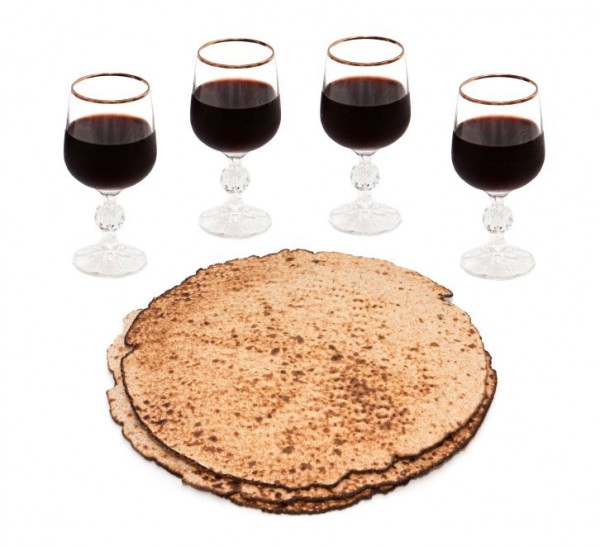
In the Chabad tradition, the four cups of the Passover seder symbolize Jewish freedom from four exiles: the Egyptian, Babylonian, and Greek, as well as the current exile which is hoped will end soon with the coming of the Messiah.
Why Passover Has a Make-Up Date
“For Messiah, our Passover Lamb, has been sacrificed.” (1 Corinthians 5:7)
Why was keeping Passover so important that it should have a make-up day? After all, no other Jewish holiday does.
In taking the Jewish People out of Egypt, God performed great miracles, carrying out spectacles that left no doubt in the mind of those who witnessed them that the Creator of the Universe was the God of the Israelites.
As well, the blood of the lamb on the doorposts of the faithful—Israelite or Egyptian—who chose to observe the Word of the Lord as spoken through Moses and Aaron saved the lives of their firstborn, as well as delivered them from the tyranny of slavery in Egypt.
That Passover sacrifice was a prophetic picture of the redemptive work of Yeshua HaMashiach (Jesus the Messiah), who overthrew spiritual oppression and delivered us from death and slavery to sin.
Although every Biblical Jewish holiday has prophetic significance, Passover reveals God’s grace and His power to work a mighty salvation.
“For you know that it was not with perishable things such as silver or gold that you were redeemed from the empty way of life handed down to you from your ancestors, but with the precious blood of Messiah, a lamb without blemish or defect.” (1 Peter 1:18–19)
Second Chances Through Teshuvah (Repentance)
Although Scripture specifies that this day of second chances applies to those who were on a journey at the time of the Passover sacrifice or were ritually unclean due to contact with a dead body, Jewish rabbinical writings provide insight into how this was traditionally understood.
The Mishnah (rabbinical interpretation of the Torah—the Five Books of Moses) explains that the concept of a journey should be interpreted liberally, and that ritual impurity should be extended to include all types of ritual impurity (for instance, involuntary emission or menstruation). (Pesachim 9:2–4)
To many Jews, Pesach Sheni represents God’s grace: He provides second chances to those who turn to God in repentance (teshuvah) and walk in God’s ways.
As Rabbi Yosef Yitzchak of Lubavitch said, “The Second Passover means that it’s never a ‘lost case.’”
The Countdown to Pentecost: Counting the Omer
“From the day after the Sabbath, the day you brought the sheaf of the wave offering, count off seven full weeks. Count off fifty days up to the day after the seventh Sabbath, and then present an offering of new grain to the Lord.” (Leviticus 23:15–16)
While Pesach Sheni falls about a month after Pesach, the feast of Shavuot (Pentecost) comes 50 days after Pesach.
This Biblical countdown currently in progress is called Sefirat HaOmer or Counting the Omer.
The omer (sheaf) is an ancient Hebrew measure equal to one tenth of an ephah. It is also the sheaf offered on the second day of Passover at the Temple.
Since the second night of Passover when the omer was offered during the Temple period (Firstfruits), the Jewish People have been counting the omer in obedience to God’s commandment.
Every day during this season of counting, a special prayer is recited that names exactly how many days have passed since Passover, culminating in Pentecost on the 50th day.
After nightfall, about 30 minutes following sunset, the following prayer is recited while standing, immediately after the evening prayer:
Baruch atah Adonai Eloheinu Melekh Ha-olam asher kid’shanu b’mitzvotav v’tzivanu al S’firat Ha-omer. (Blessed are You, Lord our God, King of the Universe, Who has sanctified us with His commandments and commanded us to count the Omer.)
Then the exact count is pronounced in days and weeks. For example, “Today is 29 days, which are four weeks and one day, of the Omer.”
The Joy of Receiving God’s Written Word
Counting the omer connects the deliverance of the Israelites in Egypt (physical redemption) with the giving of the law 50 days later on Sinai (spiritual redemption).
According to Midrash Rabba (rabbinic teaching), Moses told the Israelites when they left Egypt that in 49 days they would receive the Torah.
The newly freed slaves so eagerly anticipated God giving them a new spiritual life through His own words that they kept a count of each passing day ending with the giving of the Torah at Mount Sinai.
Counting the omer is also connected to the giving of offerings. In Temple times, an omer of barley representing the new harvest was offered on Firstfruits during the Feast of Unleavened Bread or Passover. The 50th day was Shavuot (Pentecost), which signaled the offering of two loaves of wheat at the beginning of the wheat harvest.
Some rabbis explain that the two types of grain involved express the spiritual growth of the Hebrew people during those 50 days. From the offering of the simple sheaves of barley to the two loaves of wheat at the end of the 49 days reveals a people who have moved beyond a slave mentality to an autonomous community who joyfully follow God’s laws and standards.
Lag BaOmer: From Joy to Mourning to Joy
Despite the joy associated with receiving God’s Word, the period of the counting of the Omer has evolved into a time of semi-mourning in which there are no haircuts, shaving, listening to music, weddings or parties.
The reason traditionally cited is that a plague during Sefirat HaOmer in the time of Rabbi Akiva (AD 40–137) is said to have taken 24,000 of his students.
It is thought that 12,000 chavruta (Torah study partners), a total of 24,000, were killed either by the plague or by the Romans during the Bar Kochba rebellion (AD 132–136) as the result of Divine anger poured out because they did not honor or respect one another properly.
The 33rd day of the Omer, Lag BaOmer, which begins Saturday night, marks the end of the plague among Rabbi Akiva’s students.
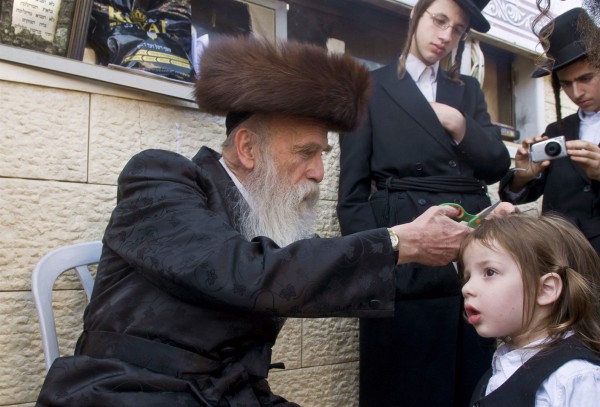
Because cutting hair is not allowed during the time of the Counting of the Omer but is permitted on Lag BaOmer, boys who turn three between Pesach and Lag BaOmer have their upsherin (the traditional first haircut) on this date.
For one day, the semi-mourning is suspended and a day of celebration is marked. Here in Israel, this special day is characterized by the lighting of massive bonfires throughout the country, as well as singing, dancing, and prayer.
Many in Israel will also visit the grave of Rabbi Shimon bar Yochai, a renowned 1st century sage in Israel. He is said to have been one of five surviving students of Rabbi Akiva who went on to be a great Torah teacher himself. He is also thought to have revealed “hidden secrets of the Torah” on the day that he died in a Kabbalistic (Jewish mysticism) work known as the Zohar (mystical commentary on the Torah).
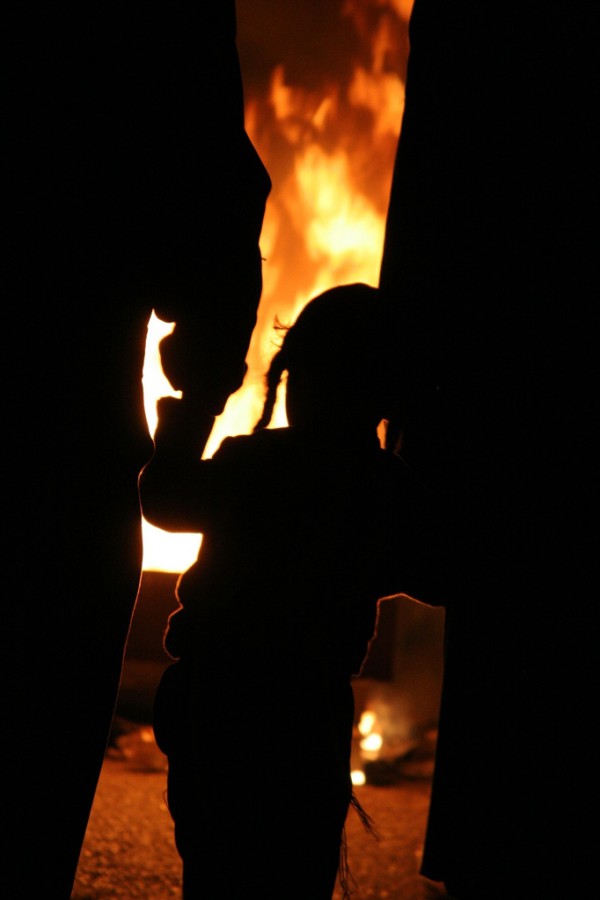
The massive bonfires on Lag BaOmer actually commemorate the light that Rabbi Shimon bar Yochai is believed to have introduced into the world through his mystical teachings.
Included in this work of mysticism, which Bibles For Israel does NOT endorse, is a discussion on the nature of God, the formation of the universe, the nature of the soul, the meaning of redemption, the relationship of the “true self” to “The Light of God,” and the relationship between “universal energy” and man.
In general, rabbis consider the period of the counting of the omer a time for inner growth. During this time, observant Jews work on improving character through inner reflection by working on one aspect for each of the 49 days of counting.
The Kabbalah (mystical Jewish teachings) associates each of the seven weeks of counting the omer with one of the sephirot or ways through which God reveals Himself. These include the following:
- Chesed: loving-kindness; benevolence—the manifestation of God’s benevolence and kindness.
- Gevurah: justice; discipline; restraint; awe—the strength of God’s absolute judgment.
- Tipheret: beauty and harmony; compassion—the integration of the above two.
- Netzach: victory; endurance; fortitude; ambition—associated with long-suffering and patience.
- Hod: humility; splendor—submission through prayer.
- Yesod: foundation; bonding—the power of connection.
- Malchut: nobility; kingdom; sovereignty; leadership—reflected in God’s creation.
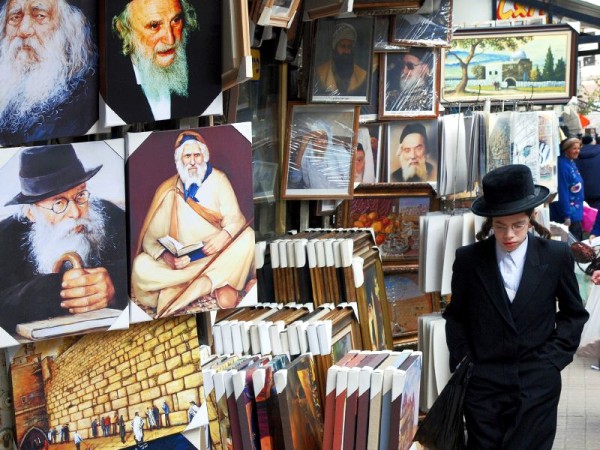
An Orthodox Jewish lad passes by a store in the Mea Shearim neighborhood of Jerusalem that sells paintings of revered rabbis.
Each weekday of counting of the omer is associated with one of these seven sephirot: for example, the First Day (Yom Rishon or Sunday) is associated with chesed (loving-kindness).
By combining the themes of weeks and days, one aspect of a person’s character can be improved through self-reflection and repentance; for instance, on the first day of the fifth week of counting the omer, the chesed of hod (loving-kindness in humility) is contemplated.
Thus, through the counting of the omer, the days between Passover and Shavuot have become a period for self-contemplation and improvement that lead to a more emotionally mature person who is ready to receive the Torah.
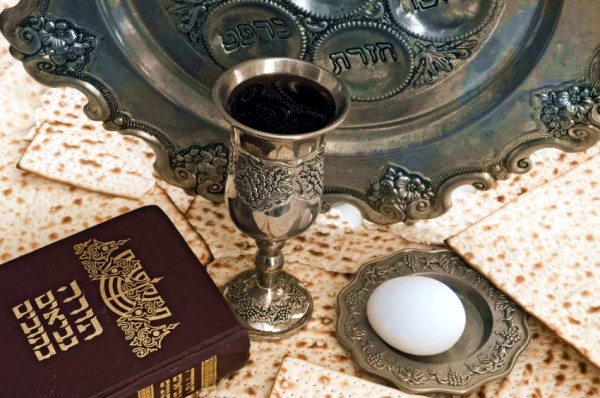
A Tanakh (Hebrew Old Testament) with symbolic foods representing Passover. The hard-boiled egg represents the offering in Temple times.
Those who follow Yeshua, however, understand the deeper, prophetic significance of this period of counting.
When Yeshua (Jesus) was raised from the dead on the first day of the counting of the omer, He appeared to His disciples and told them to wait in Jerusalem until they were empowered with the promised outpouring of the Ruach HaKodesh (Holy Spirit):
“He told them, This is what is written: The Messiah will suffer and rise from the dead on the third day, and repentance for the forgiveness of sins will be preached in His name to all nations, beginning at Jerusalem. You are witnesses of these things. I am going to send you what My Father has promised; but stay in the city until you have been clothed with power from on high.” (Luke 24:46–49)
During this period of waiting, as they contemplated the death, resurrection, and ascension of Yeshua HaMashiach, mulling over everything they had experienced with Him, as well as their own reactions, they continued to count the omer.
Just as the ancient Israelites eagerly anticipated the giving of the Torah while on their journey from Egypt to Mount Sinai, Yeshua’s talmidim (disciples) eagerly anticipated the outpouring of the Ruach. They prepared themselves for the writing of God’s Torah on their hearts (the New Covenant) at Shavuot, the culmination of redemption. (Jeremiah 31:31–33)
On that day, as the Ruach was poured out and the Followers of Yeshua were empowered to live holy lives, a great many Jews who were in Jerusalem for Shavuot came to believe in Yeshua, the Light of the World.
Even that event itself speaks of the great end-time outpouring of God’s Spirit that will lead to a revival and the national salvation of the Jewish People.
On Second Passover, as the sacrifice of the Passover Lamb is remembered and the outpouring of the Ruach HaKodesh on Shavuot is anticipated, we can rejoice in God’s promised end-time revival.
He is moving among His people, preparing them for His return.
Although the Jewish People did not accept Yeshua as the Messiah nationally at His first coming 2,000 years ago, the Bible promises that all Israel will be saved. It also promises that salvation will greatly impact the entire planet.
Each of us has the great privilege to participate in this end-time move that gives Israel a second chance to accept Yeshua, by bringing the Good News both to the Jewish People and the nations.
“I do not want you to be ignorant of this mystery, brothers and sisters, so that you may not be conceited: Israel has experienced a hardening in part until the full number of the Gentiles has come in, and in this way all Israel will be saved. As it is written: ‘The deliverer will come from Zion; He will turn godlessness away from Jacob.’” (Romans 11:25–26)




